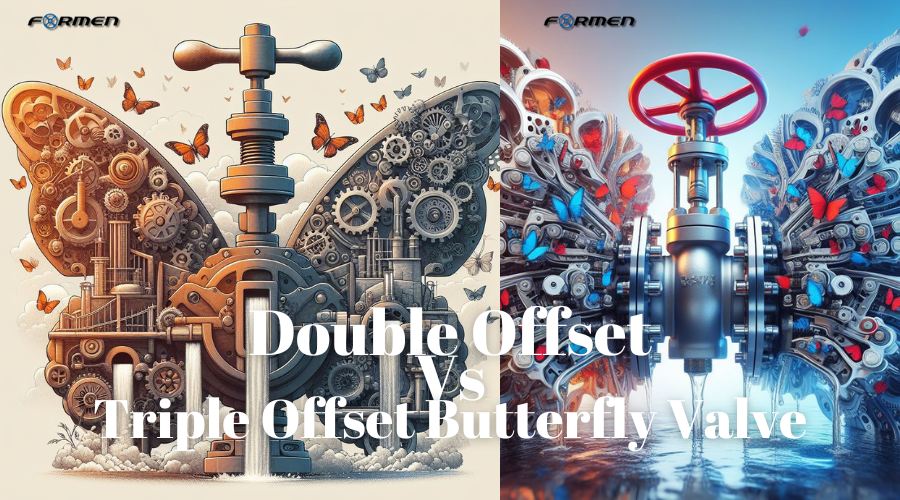
In industrial flow control, butterfly valves are essential components, offering versatile and reliable operation in various applications. Among the various types of butterfly valves available, the debate between double-offset and triple-offset designs often arises. Each offers distinct advantages depending on the system’s specific requirements. Let’s delve deeper into these two valve types’ characteristics, capabilities, and considerations to aid in your decision-making process.
Double-offset butterfly valves are renowned for their innovative design, featuring a disc that is offset from both the centerline of the valve body and the stem axis. This offset arrangement minimizes wear and friction during operation, resulting in smoother valve opening and closing. Here’s a closer look at the critical features of double-offset butterfly valves:
Double offset butterfly valves typically employ a resilient rubber or elastomeric seat to ensure a tight seal against the disc. This sealing mechanism effectively prevents leakage and provides reliable performance across various operating conditions.
Double offset butterfly valves are commendable in most industrial settings. However, they may not be suitable for applications requiring extremely tight shut-off or where high pressures and temperatures are involved.
One of the primary advantages of double-offset butterfly valves is their affordability relative to triple-offset counterparts. This cost-effectiveness makes them popular for industrial applications where tight shut-off requirements are not paramount.
In contrast, triple-offset butterfly valves represent the pinnacle of butterfly valve engineering, featuring a disc offset from the centerline of the valve body, stem axis, and seat axis. This sophisticated design offers unparalleled sealing performance and reliability, particularly in demanding environments. Let’s delve into the distinguishing features of triple-offset butterfly valves:
Unlike double-offset butterfly valves, which typically utilize rubber or elastomeric seats, triple-offset valves employ a metal-to-metal seating arrangement. This robust sealing mechanism ensures superior performance and durability, even in high-pressure and high-temperature applications.
The triple offset design provides a bubble-tight seal, minimizing leakage and ensuring safe operation, even in critical processes where fluid containment is paramount. This feature makes china butterfly valves the preferred choice for applications requiring stringent shut-off capabilities.
Thanks to their advanced design and materials, triple-offset butterfly valves boast an extended service life compared to their double-offset counterparts. This translates to longer intervals between maintenance and reduced downtime, ultimately enhancing operational efficiency and cost-effectiveness.
It’s worth noting that the superior performance and durability of triple-offset butterfly valves come at a higher initial cost compared to double-offset valves. However, the long-term benefits of reliability, longevity, and reduced maintenance expenses often justify the investment, particularly in critical or high-risk applications.
When choosing between double-offset and triple-offset butterfly valves, it’s essential to consider your application’s specific requirements and constraints. Here are some factors to keep in mind:
Operating Conditions: Evaluate factors such as fluid pressure, temperature, flow rate, and compatibility with the medium to determine the most suitable valve type for your needs.
Shut-Off Requirements: A triple offset butterfly valve may be the preferred choice if your application demands tight shut-off capabilities to prevent leakage and ensure process integrity.
Budgetary Considerations: While triple offset butterfly valves offer superior performance and reliability, they come with a higher initial cost. Assess your budget constraints and weigh the long-term benefits against the upfront investment to make an informed decision.
In conclusion, both double-offset and triple-offset butterfly valves offer distinct advantages depending on the specific requirements of your application. While double-offset valves provide cost-effective performance for standard applications, triple-offset valves excel in demanding environments where tight shut-off, reliability, and longevity are paramount. By understanding the differences between these valve types and considering your system’s unique needs, you can make a well-informed decision to ensure optimal performance, efficiency, and safety.